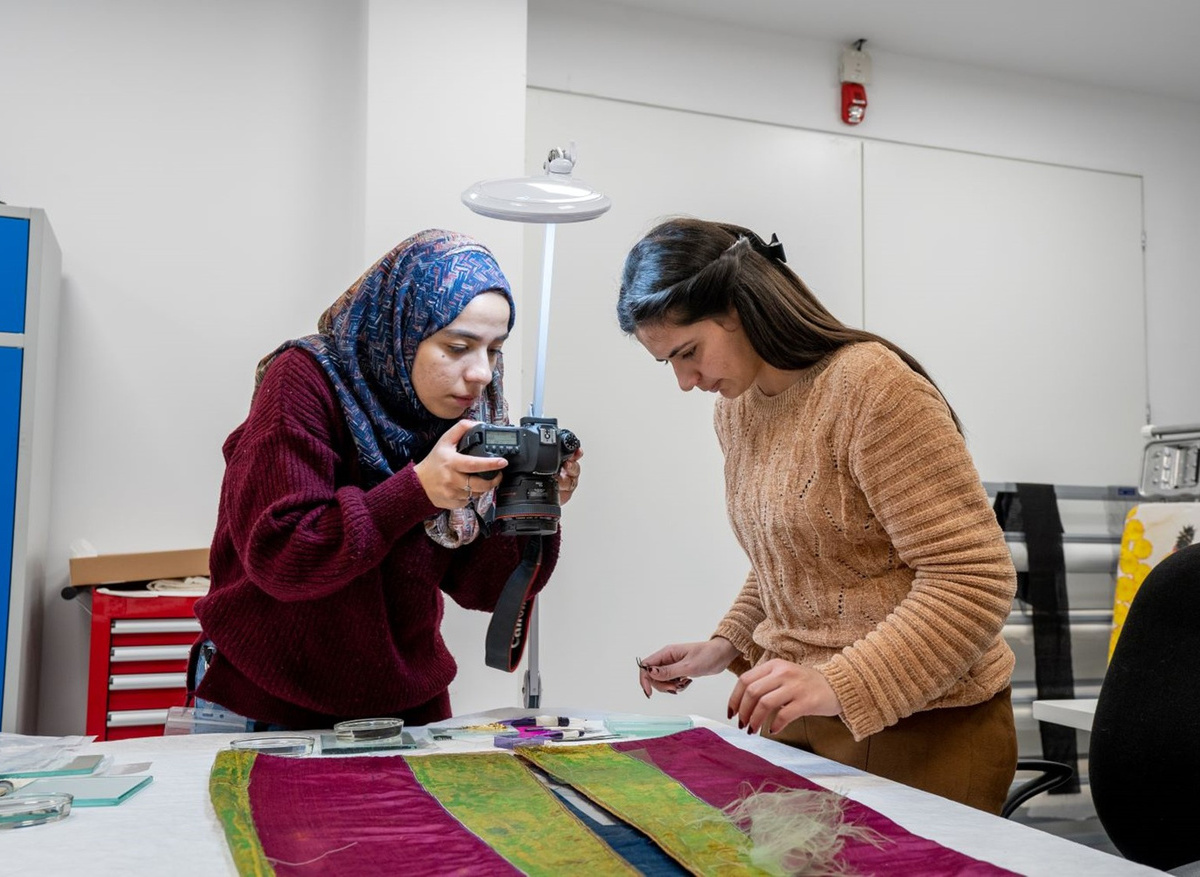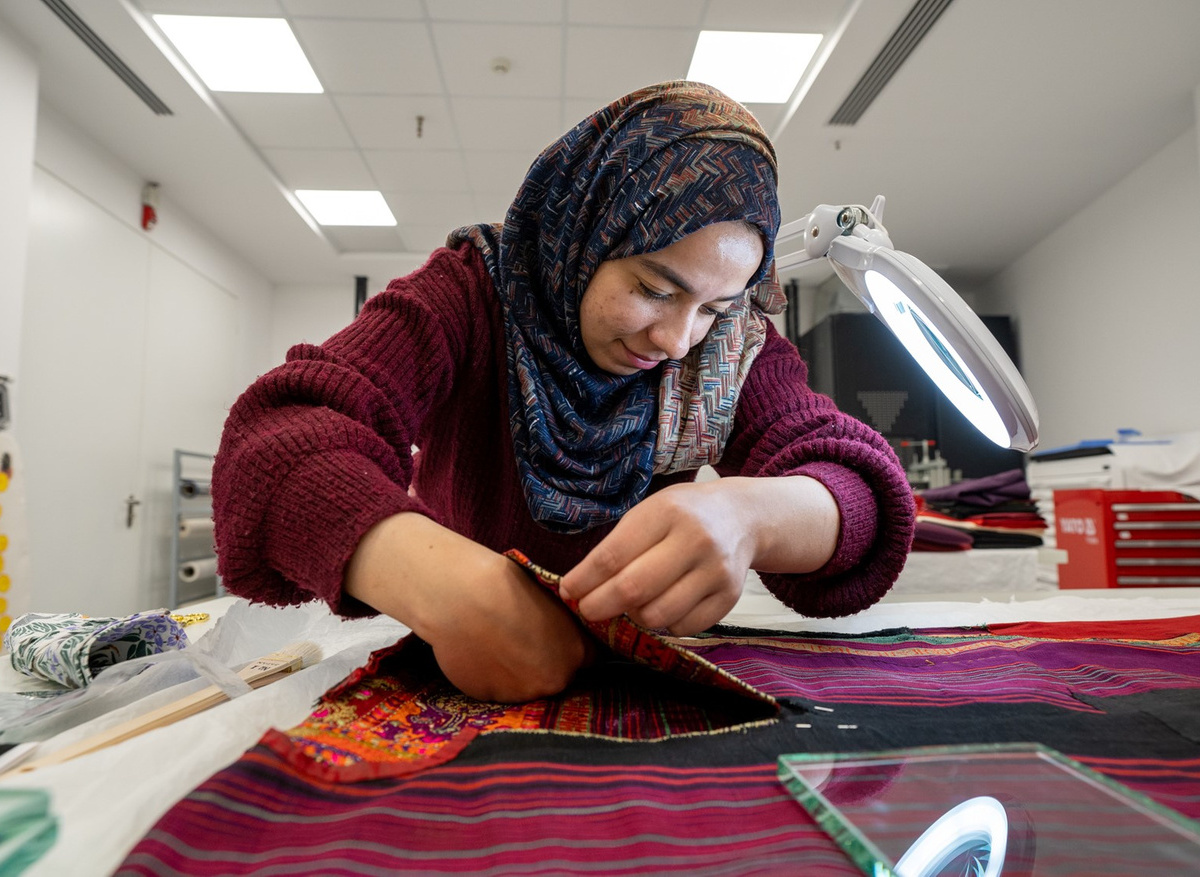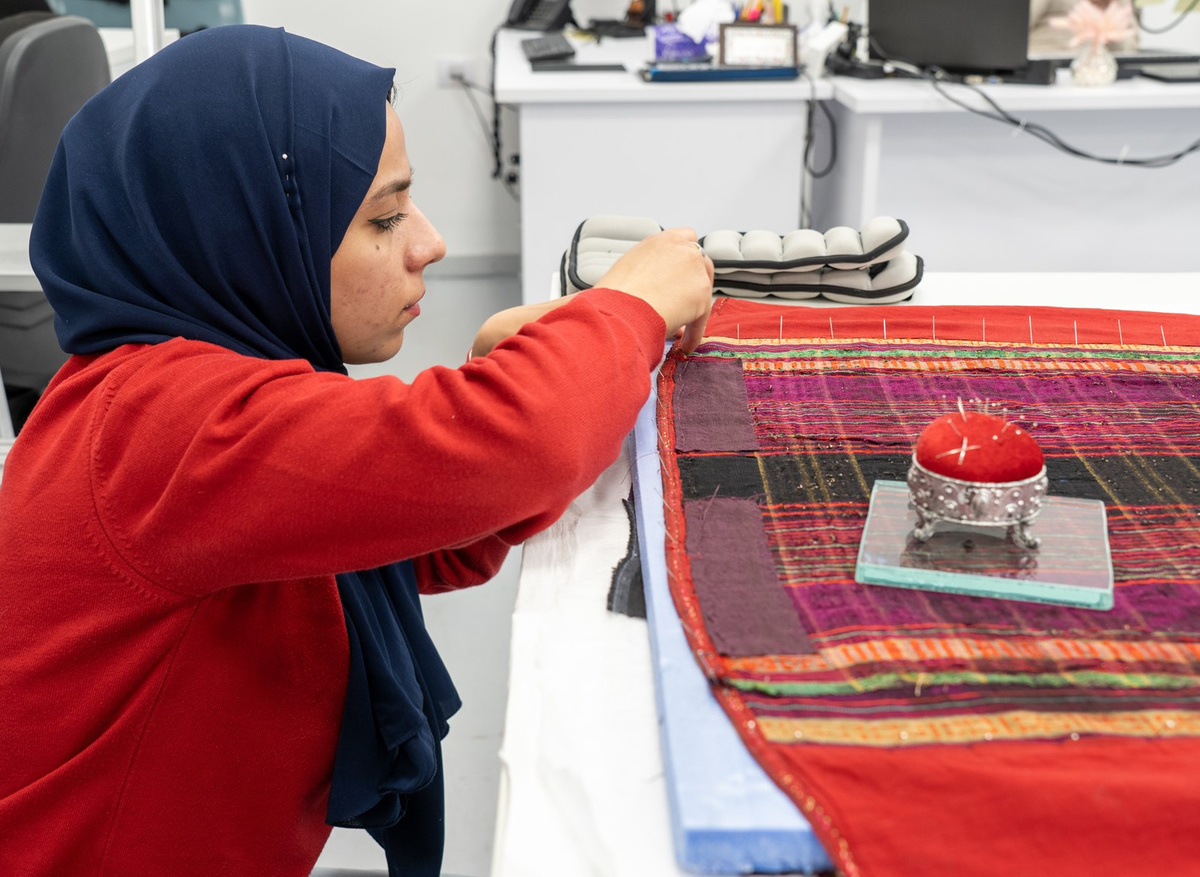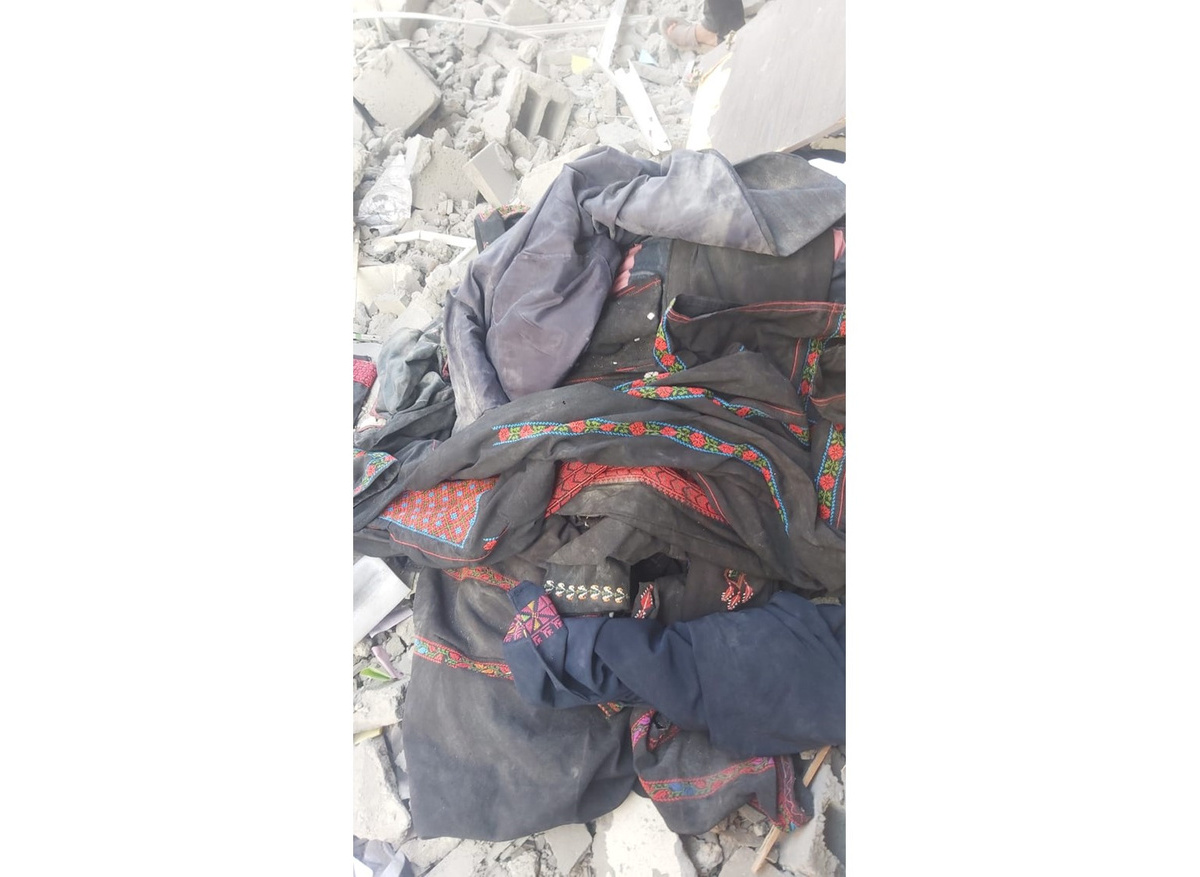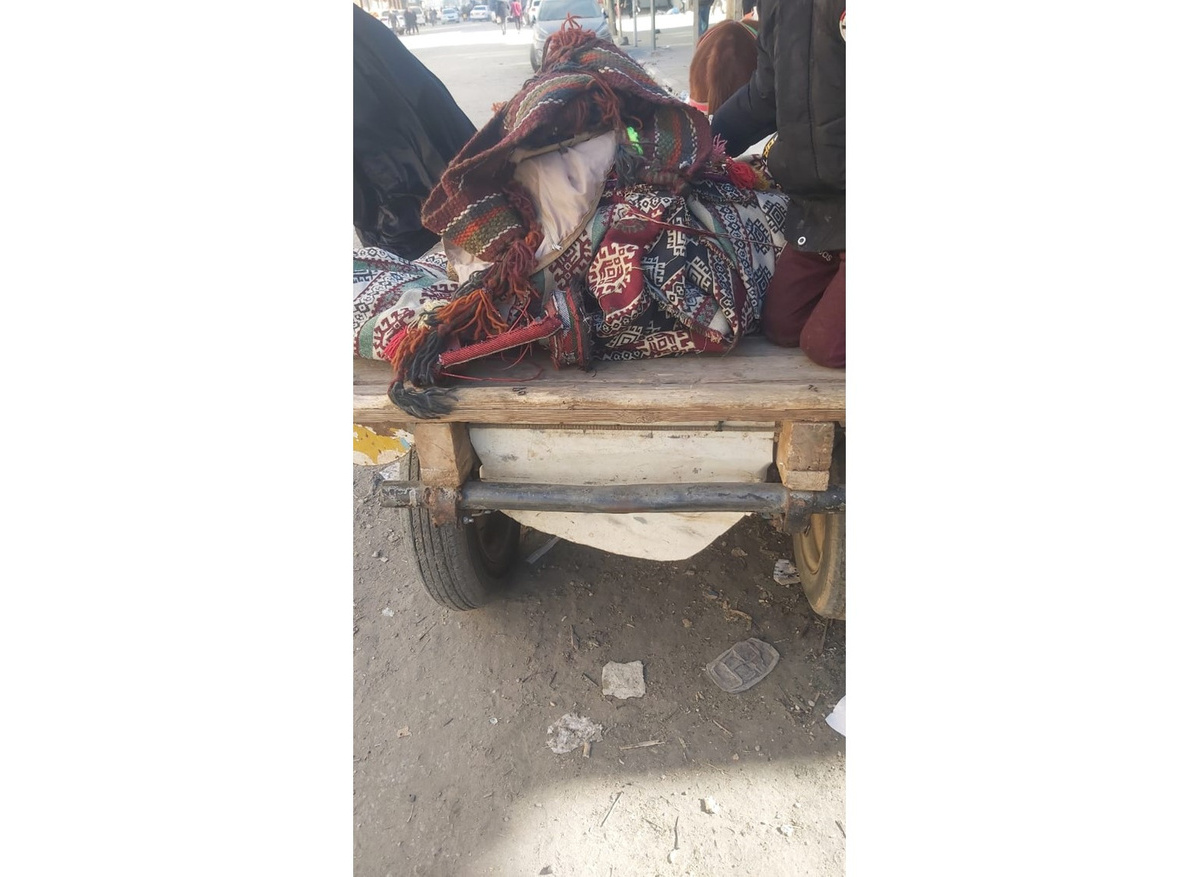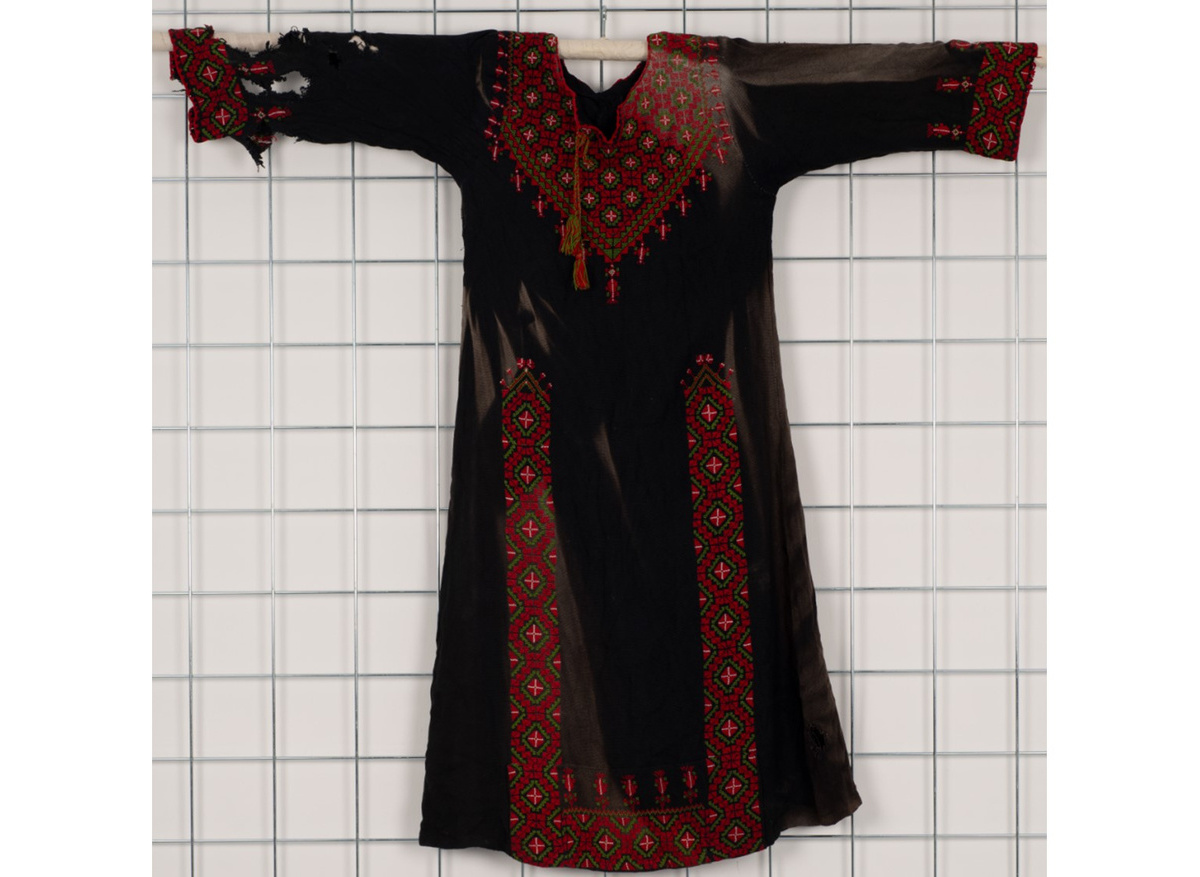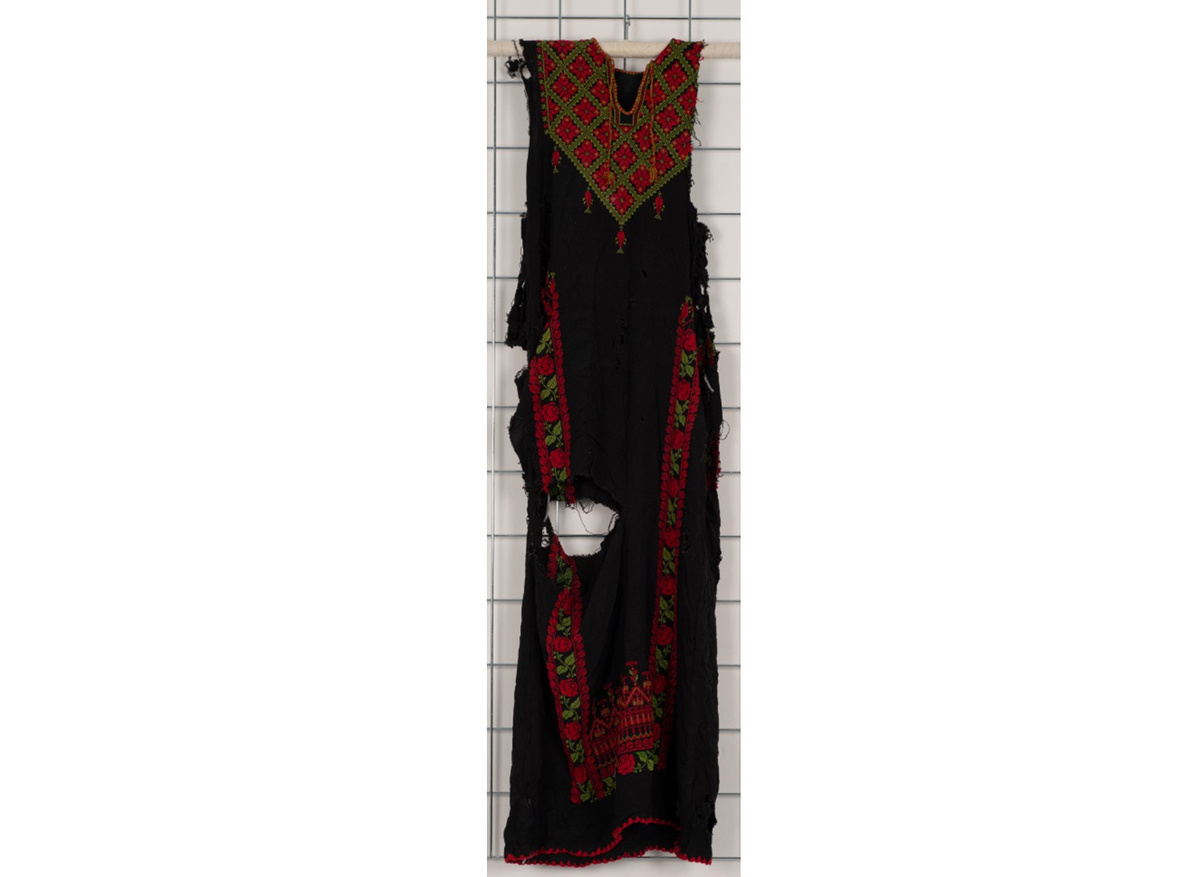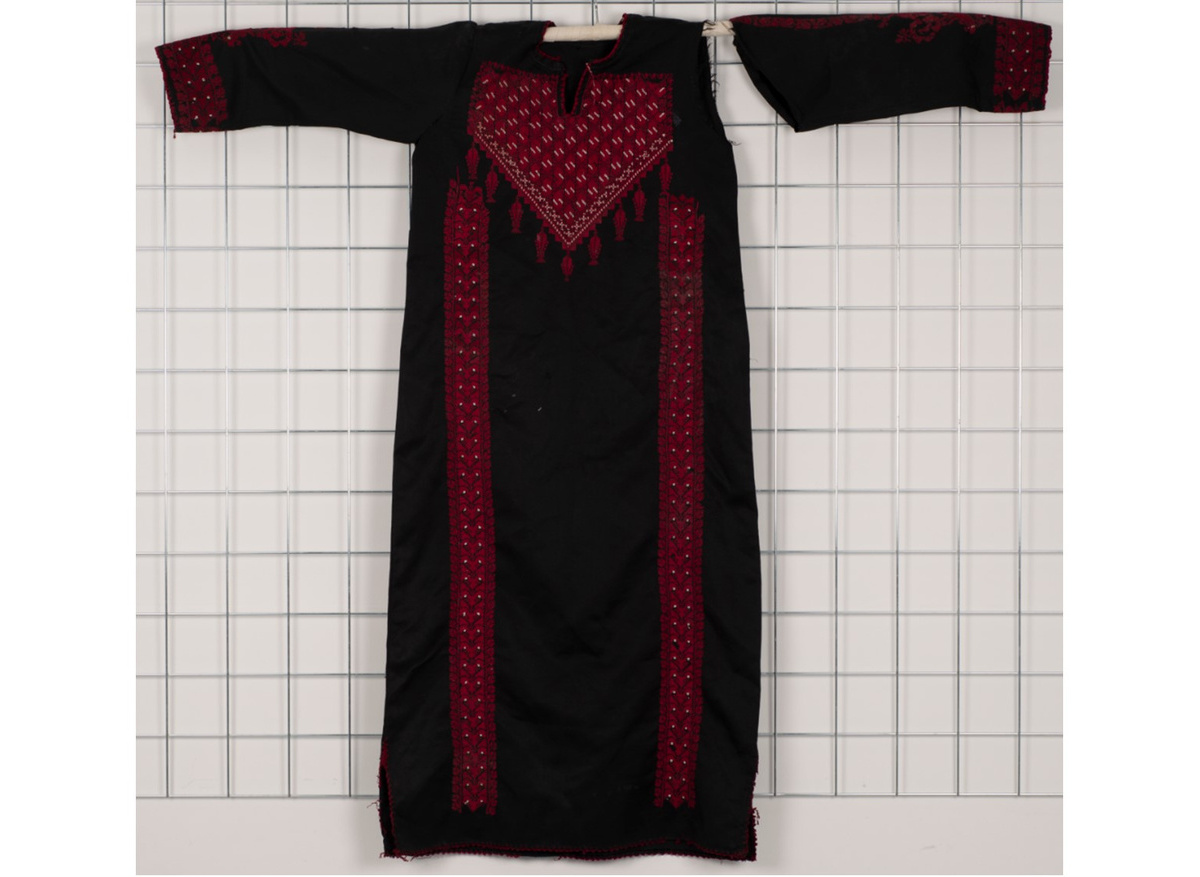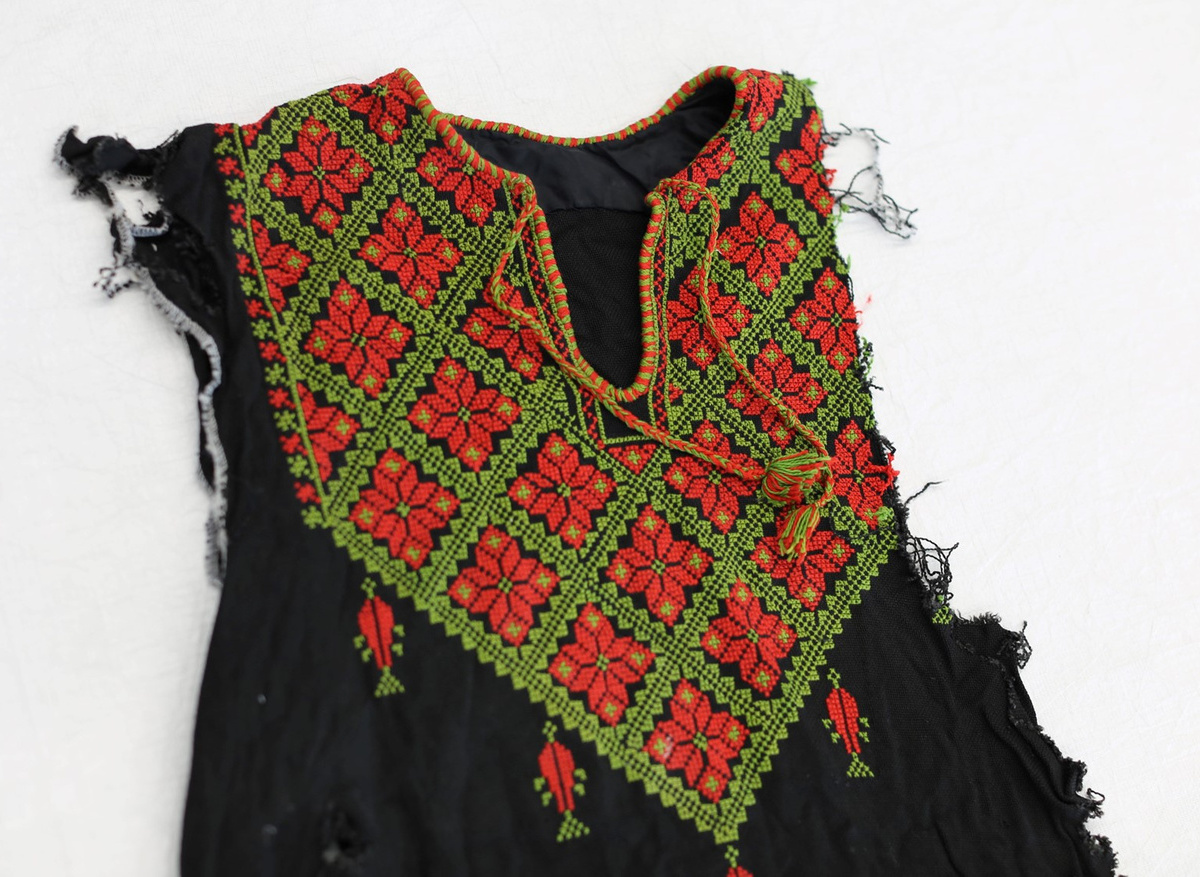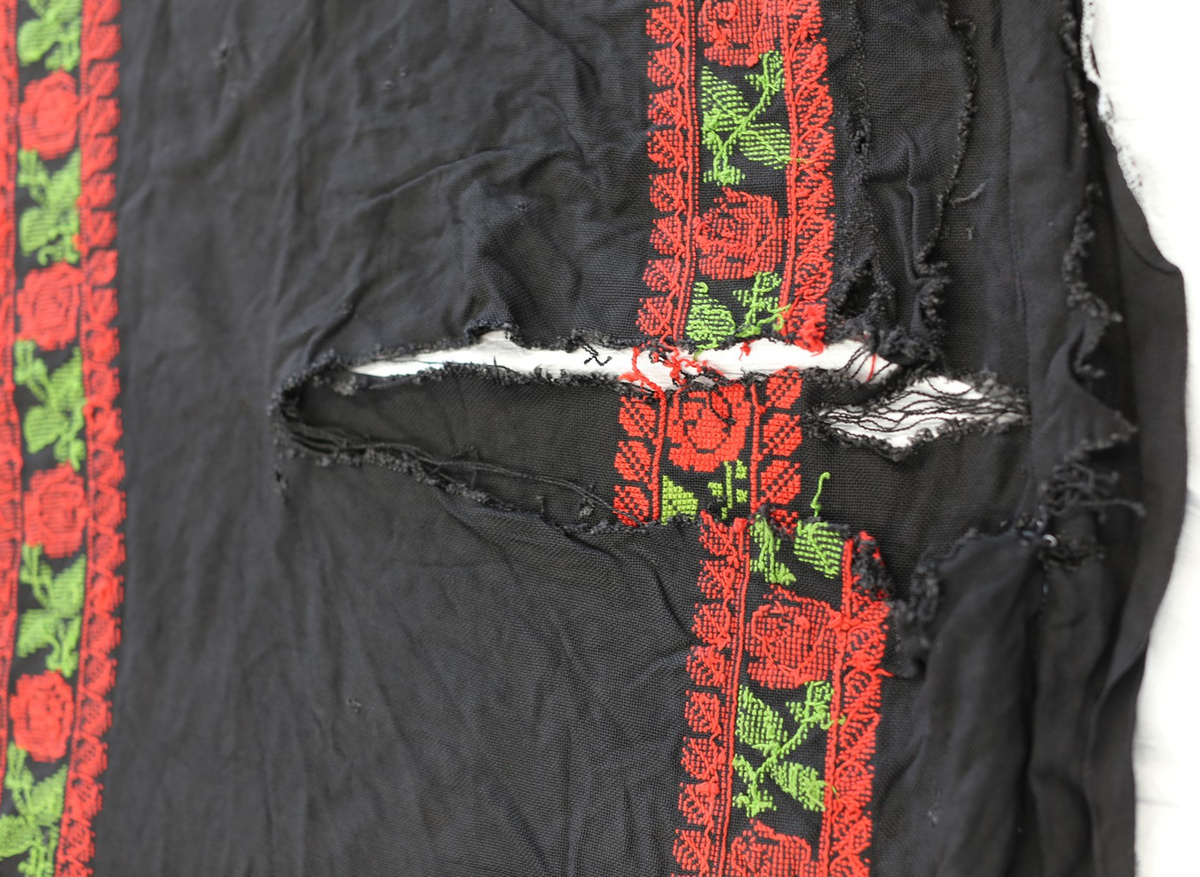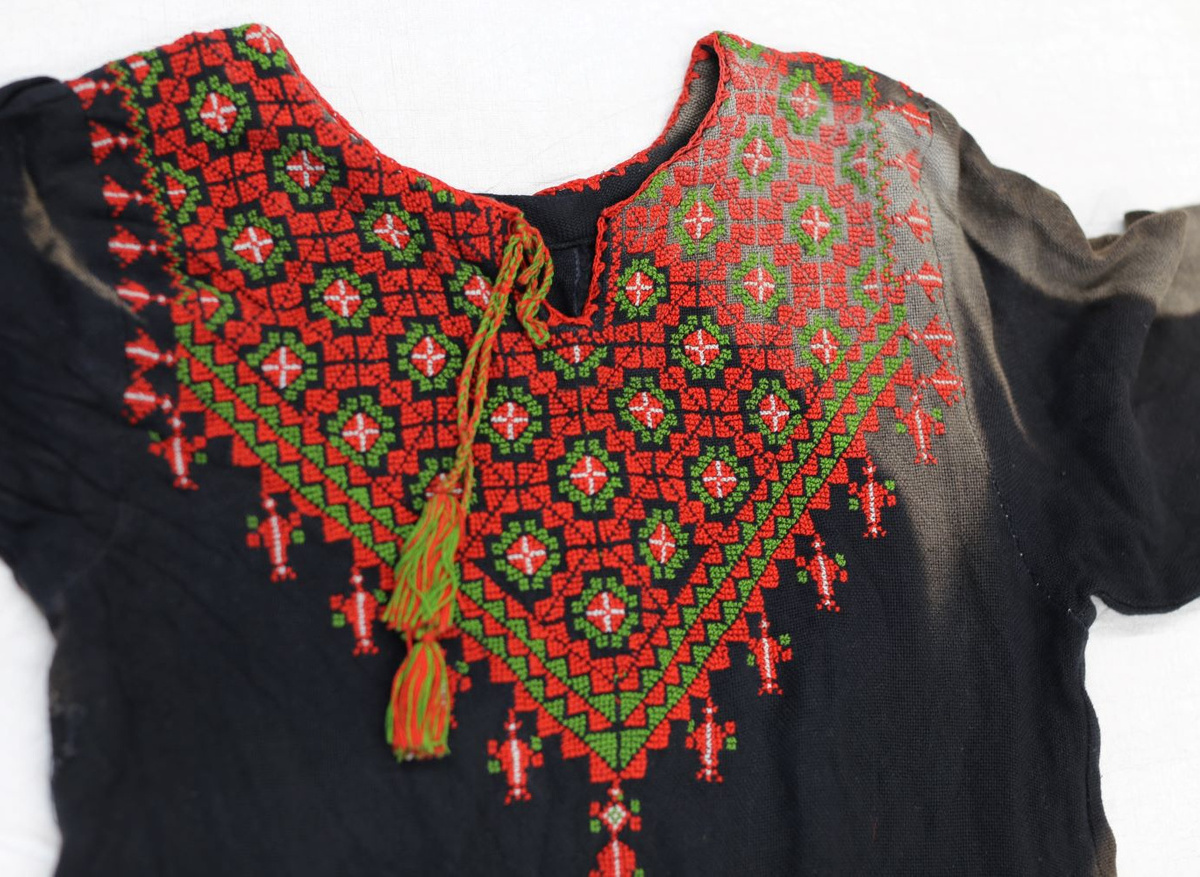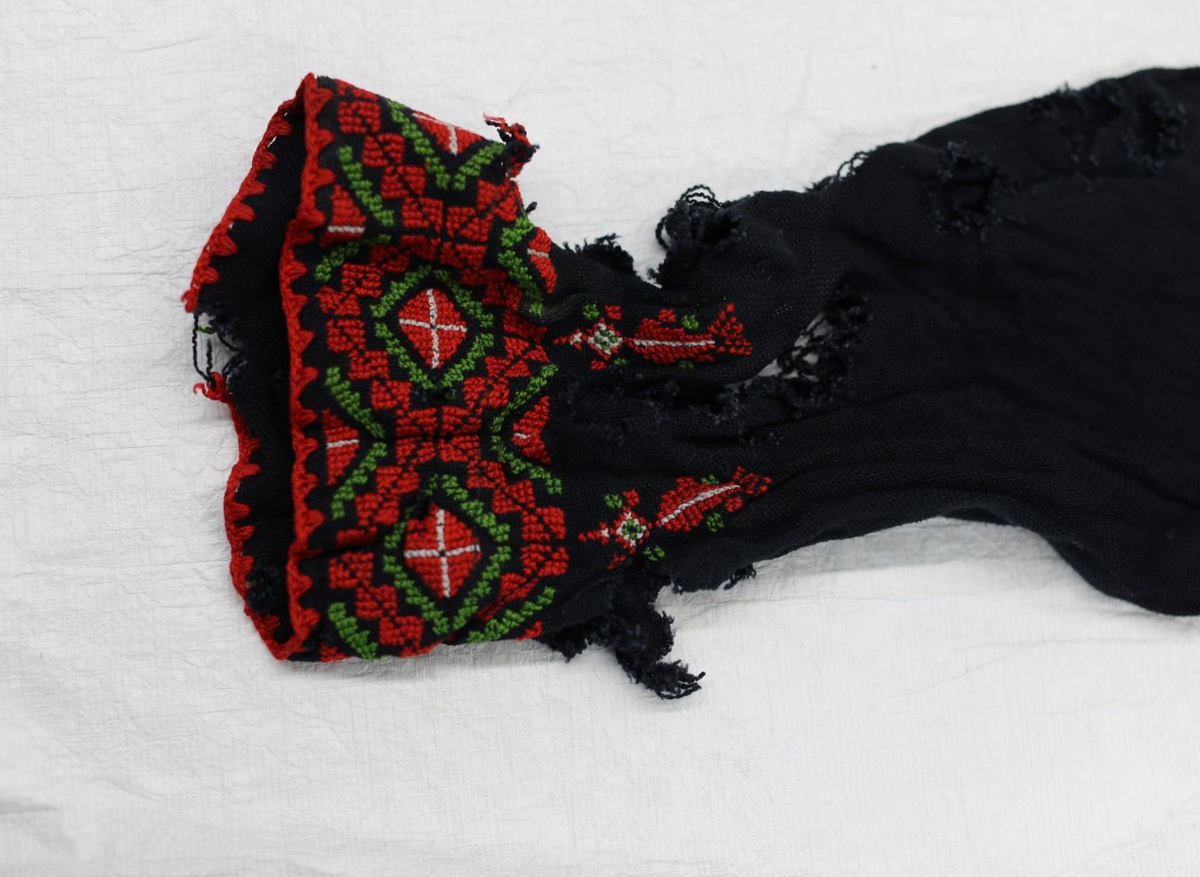The Palestinian Museum is a beautiful modern building perched on a green hill in Birzeit in the occupied West Bank, 7km from Ramallah, and 25km from Jerusalem.
The Swiss-registered NGO opened in 2016, winning the prestigious Aga Khan Award for Architecture in 2019. The terraced gardens are planted to tell the agricultural and botanical history of Palestine, alongside contemporary site-specific artworks and a reconstructed traditional dwelling.
This ‘museum without borders’, transcends geographical and political boundaries to connect Palestinians in their homeland with the 10-million strong global diaspora. The 40 strong staff contribute to new and critical perspectives of Palestinian history, culture and society. The growing collections include contemporary art, archival documents, photographs, posters, historic costume, accessories and jewellery.
The museum curates exhibitions both at home and away, which are critically acclaimed, and well documented on the museum’s website. The current display, ‘this is not an exhibition’, opened in 2024, and showcases artworks on behalf of two Gaza art spaces destroyed by recent Israeli bombing. The participating artists have either had their work, memories, loved ones, or their lives stolen by the Genocide.
The current V&A Dundee exhibition Thread Memory is a collaboration with Hayy Jameel in Jeddah and the Palestinian Museum. The city of Dundee twinned with Nablus in 1980, and the Palestinian flag has fluttered above the city ever since. The exhibition Gaza Remains the Story is a print-on-demand exhibition that can be hosted anywhere in the world. It is currently on display at the Ulster Museum in Belfast, one of more than 120 venues to have hosted the exhibition thus far.
The Palestinian Museum has a well equipped conservation studio and staff working to conserve, preserve, document, and prepare the collections for digitisation and display. The studio was founded in 2019 in collaboration with the British Library. The ‘Conservation for Digitisation’ project was funded with £152,209 from the British Council’s ‘Cultural Protection Fund’, in partnership with the UK’s Department for Digital, Culture, Media and Sport. As part of this venture, two members of Palestinian Museum staff, Baha Jubeh and Bara Bawatneh, travelled to London for a 6-week training programme in paper conservation techniques. The focus of the training was to gain skills and experience in order to conserve and digitise the museum’s 3,000 paper-based artefacts, including maps, letters, photographs and diaries.
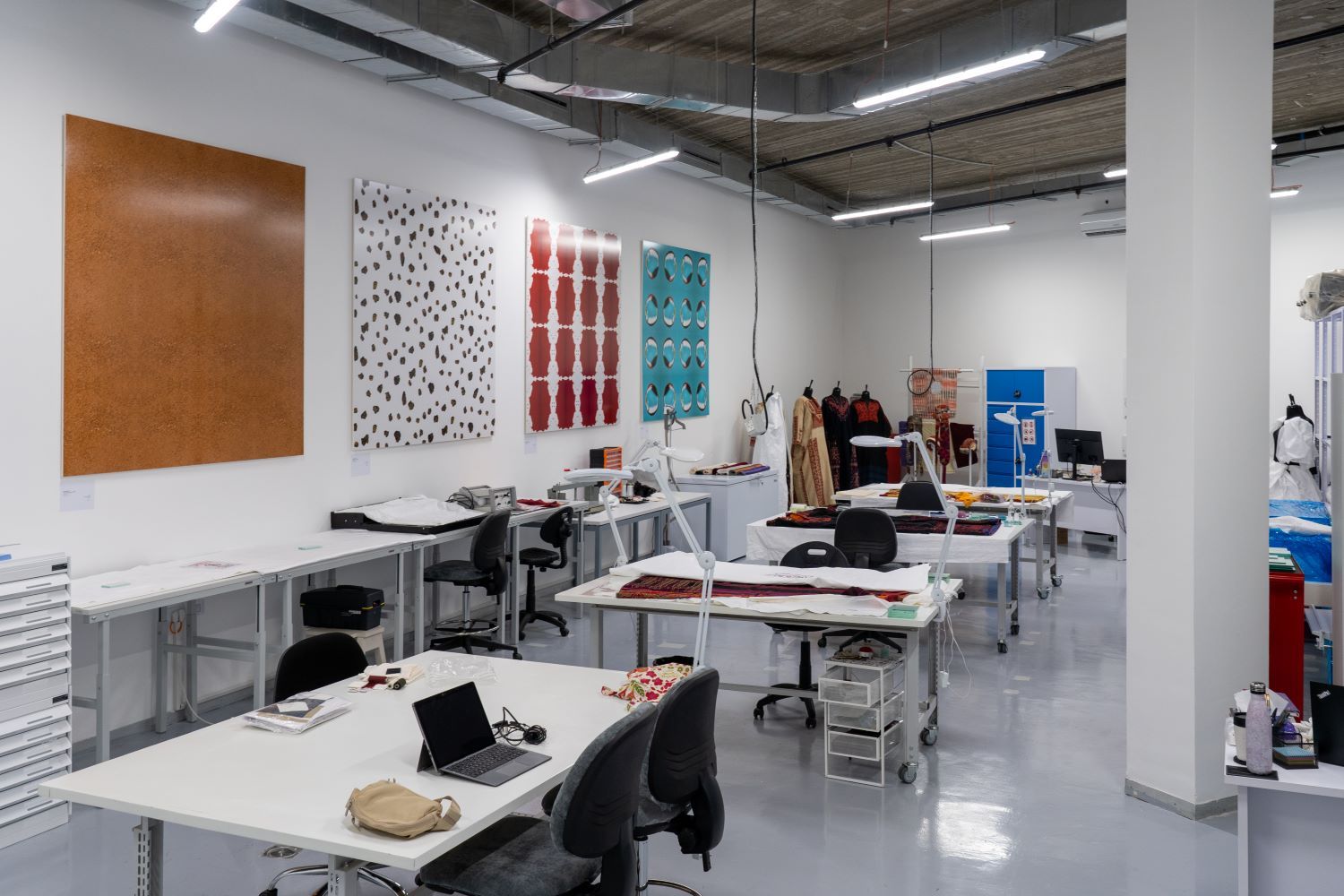
The conservation studio at the Palestinian Museum, set up for the treatment of paper and textile collections
Using the same model, a collaboration with the Victoria & Albert Museum followed in 2022, focussing on textile conservation. This 2-year collaboration was funded by ALIPH, the Geneva-based International Alliance for the Protection of Heritage, with 484,298 US dollars. The manifesto of ALIPH positions their work as ‘...a response to barbarism’. They are currently operational in crisis, conflict and post-conflict zones in 54 countries, and on 550 projects. ALIPH funding allowed the conservation studio at the Palestinian Museum to be moved into a larger, climate-controlled room, and equipment was purchased to enable the conservation of textiles and costume.
A new conservator, Salma Abu Mariam, was hired, and she, along with Baha Jubeh and Bara Bawatneh, travelled to London for a 4-week training programme at the V&A in 2022. This introduction to textile conservation and costume mounting would allow the museum’s new collection of 80 thobes (traditional embroidered dresses) and other items of dress and accessories to be conserved, digitised, and displayed.
Two embroidered dresses and a jellayeh were taken to the V&A for treatment. The condition of the pieces was representative of the wider collection. Using these three examples, Bara and Salma were taught a basic introduction to textile conservation techniques. The intense training programme included dry cleaning methods, humidification, dyeing fabric for supports, conservation stitching, and costume mounting onto bustforms. Bara and Salma left the V&A with a good understanding of the basic steps, the confidence to begin work on the Palestinian Museum’s collection, and with the strong desire to keep improving their skills and gain more experience.
A Brief Introduction to Palestinian Embroidery
In 2021, the ‘art of embroidery in Palestine, practises, skills, knowledge and rituals’ was inscribed onto the UNESCO Representative List of the Intangible Cultural Heritage of Humanity.
Palestinian embroidery, tatreez, is a traditional craft, passed down intergenerationally. Used to adorn folk costume, including dresses, veils and headdresses, it has a visual language, each village having its own colours, patterns and motifs. The density of embroidery may reflect the amount of leisure time a woman had, and the inclusion of imported fabrics may represent her status. Symbols may include representations of flora and fauna, everyday objects, or cultural roots. Others are used as amulets with protective or healing intent. Dyes for colourful embroidery threads may be produced using native plants or imported from further afield. Designs were influenced by sales of commercial embroidery threads, and their accompanying pattern books, during the British Mandate Period of 1920-1948. Palestinian embroidery continues as a contemporary practice, one that has grown from strong historical roots.
Garments were worked in, washed, and worn until they needed mending. As the ground fabric wore out it was patched or replaced, the precious embroidery retained. Sleeves from one dress could be combined with the chest panel of another, or extra fabric could be inserted to increase the length. Dresses were altered for pregnancy, nursing, or for mourning. Palestinian embroidery is an inheritance, in the theoretical as well as the material sense. Many historic dresses survive as palimpsests, and from them the stories of women’s lives, both individually, and collectively, can be read.
The hyperlocalism of Palestinian embroidery is an important aspect of its characterisation. During the Nakba, or ‘catastrophe’ of 1948, when the state of Israel was created, over 500 Palestinian villages were erased from the map, their inhabitants massacred or made refugees. Embroidery survives where villages did not, carried away as precious possessions, or the clothes on a woman’s back. Palestinians have been made refugees time and again in the past century, dispersing the material culture widely. Many embroidered dresses that have found their way into museum collections were purchased directly from women in refugee camps. Palestinian embroidery has spread throughout the world with the diaspora, as well as being picked up by travellers, pilgrims, and church missionary societies.
Recent Work at the Palestinian Museum
Towards the end of the V&A collaboration in 2024, the textile conservators at the Palestinian Museum turned educators, providing workshops for adults, collectors, and children on the theory and practice of Palestinian embroidery and its conservation. These important sessions passed the knowledge into the community, so that people could care for their own precious embroidered garments at home.
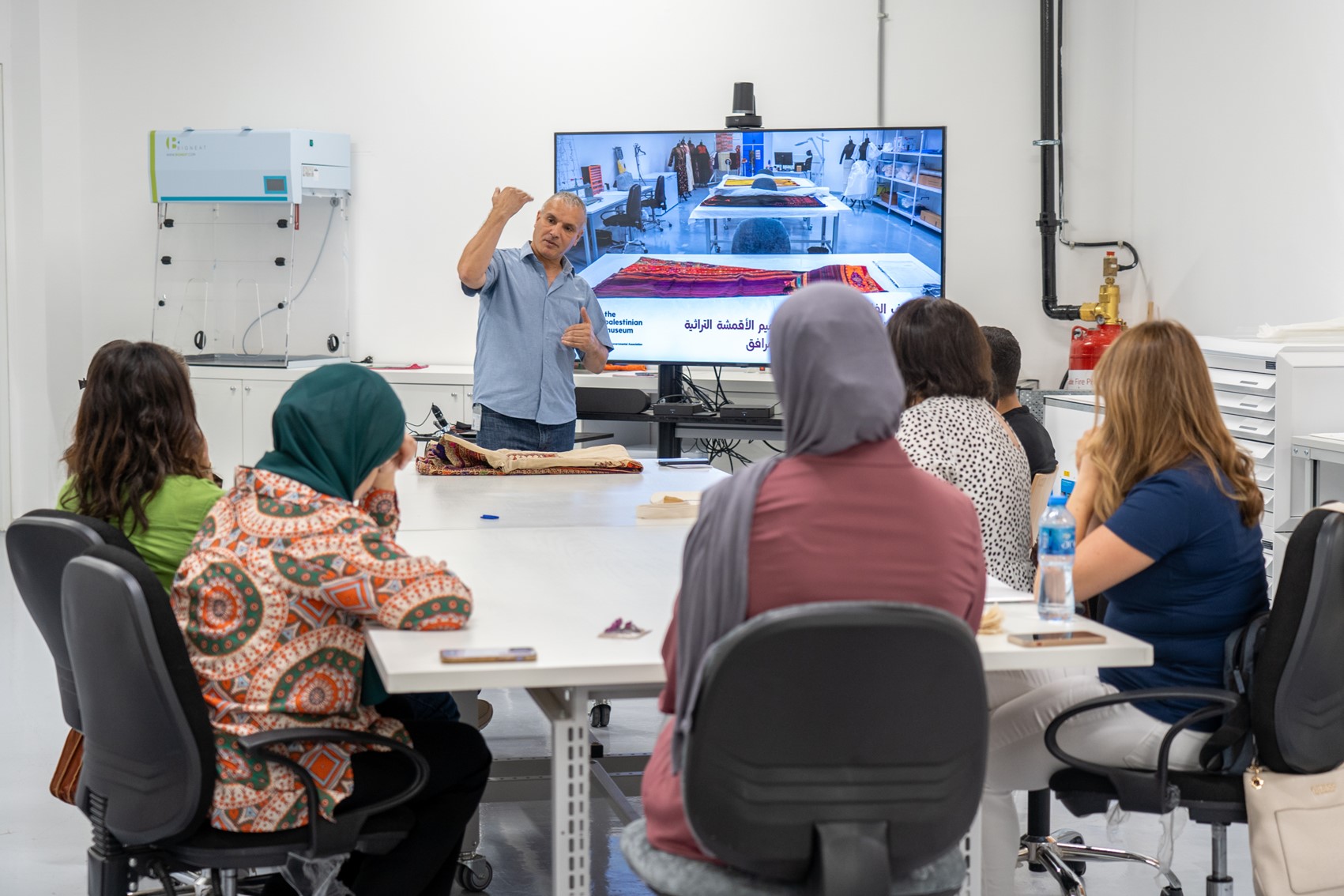
Baha giving a workshop on Palestinian embroidery
A display titled ‘Restoration of Memory’ showcased recent textile conservation work at the museum, with examples of thobes before and after conservation, and an explanation of the techniques and materials involved. The display examined how memories of Palestine can be uncovered and restored through the act of conservation. After all, to uncover a memory is often to pull on a thread.
Over the course of the 2-year funded project, Salma and Bara documented and digitised the entire collection of traditional embroidered thobes, all were re-housed on padded hangers in Tyvek covers, and 40, half the collection, were fully conserved. This is a remarkable achievement. Since the official end of the collaboration in February 2024 the Palestinian Museum has flourished as a centre for textile conservation in the occupied West Bank.
Conservation of the collection has continued, and the museum has expanded its holdings with further acquisitions of historic embroidered thobes, and dolls in regional dress. Each new item is processed on arrival, documented, condition checked, and a treatment plan created before being prepared for storage. The conservation studio now takes on conservation work on behalf of other museums and collectors across Palestine.
In February 2024, the museum created a display titled ‘Women of Gaza’. This showcased thobes from Majdal, Hiribya, Gaza, Deir al-Balah and Khan Yunis, alongside Bedouin headdresses and burqas from the south of Gaza Valley, and jewellery from many different communities. Conservation of these objects, and mounting for display allowed a story to be told of Gazan women’s cultural achievements, of their history, identity, and creativity, alongside their displacement, refugeehood, deprivation and loss.
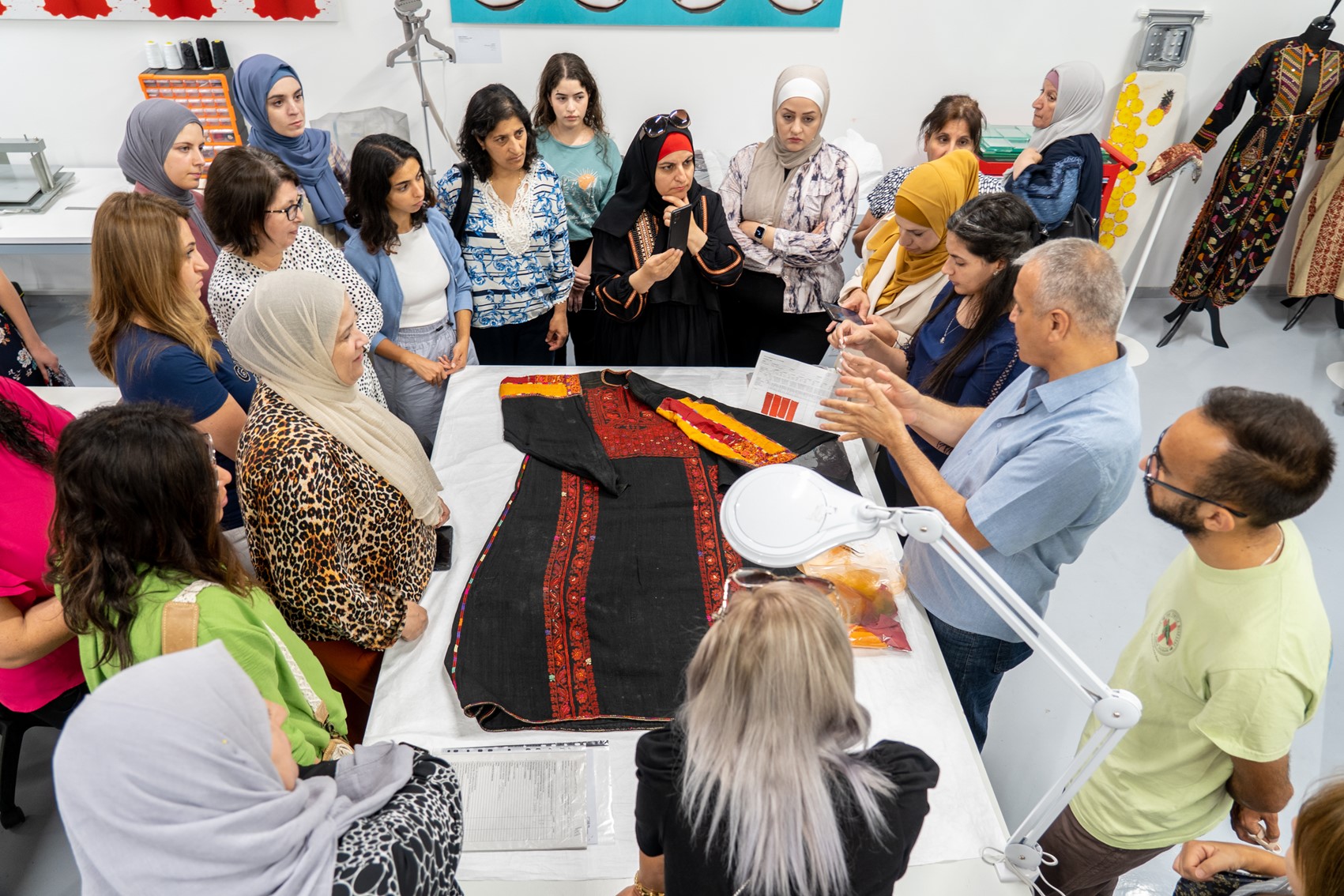
The inauguration of the textile conservation studio in July 2023, showcasing the work on the collections to the local community
Museum Collections in Gaza
At the time of writing, and in the period since the Israeli assault on Gaza began in October 2023, nearly 80% of buildings in Gaza have been damaged or destroyed. This includes the systematic destruction of museums, archives, libraries, and historic and archaeologically important sites. Attempts to salvage, recover and protect Gazan cultural heritage have been ongoing for the past two years. This work in an active war zone, in a territory under siege and experiencing famine, is understandably near impossible, but the work continues.
The true extent of what has been lost, and what can be salvaged, will not be understood until after the war ends. In the meantime, there are Gazan museum workers, including curators and conservators, working alongside members of the public to try and safeguard and recover contemporary, historical, and archaeological collections, and ensure their survival.
The Rafah Museum was destroyed by bombing on October 28th 2023. It housed around 3,000 objects including costume, jewellery, archives, photographs and items of everyday life from the city. In the aftermath, ALIPH provided funding to the Palestinian Museum to co-ordinate a salvage operation. The funding paid for a bulldozer to be hired, and a team of 10 women were quickly given training both in person in Gaza by the museum’s curator, and remotely online by other museum professionals. They began digging, and were able to recover almost 25% of the objects, which were gathered together in a tent in a safer area of the enclave.
Among the items recovered were three dresses. The impact of the bombing had thrown one up onto an electricity pole, which was only able to be recovered after several months when someone was able to climb up and retrieve it. Another dress was torn into pieces, the parts found 6 months and several kilometres apart, and brought back together. The third dress, that of a little girl, was flung high into the air, landing on the roof of a destroyed building. It took nearly a year to retrieve, and required the use of a rented crane. Exposed to the sun, wind and rain, the dress shows the impact of the explosion, and the subsequent exposure to the elements.
Dr Suhaila Shaheen, the Director of the Rafah Museum, attempted to get these three dresses out of Gaza. She went to the Karm Abu Salam crossing, and asked people who had permission to leave to carry the dresses out with them. No one would, for fear of being caught doing so by the Israeli soldiers, and jeopardising their own chance of leaving. After months of trying, a foreign doctor who had been volunteering in one of the hospitals agreed to take them. The three embroidered dresses were taken to the hospital like wounded patients, put in his suitcase, and smuggled out of Gaza as he left.
As for the hundreds of other objects that were salvaged from the Rafah Museum; after months of hard labour, when the task was complete, and everything that could be salvaged had been, the tent was bombed, and everything inside was completely destroyed.
The three dresses were brought out of Gaza and to safety, they leave behind them millions of Palestinians in desperate need. These are the dresses of a child, a young woman, and an older woman. They could be one family.
The older woman’s dress is embroidered in red and white threads, with motifs including Al Alq (the leech), Hebron cypress, feathers, plants and mountains. The left sleeve is completely detached from the body of the dress.
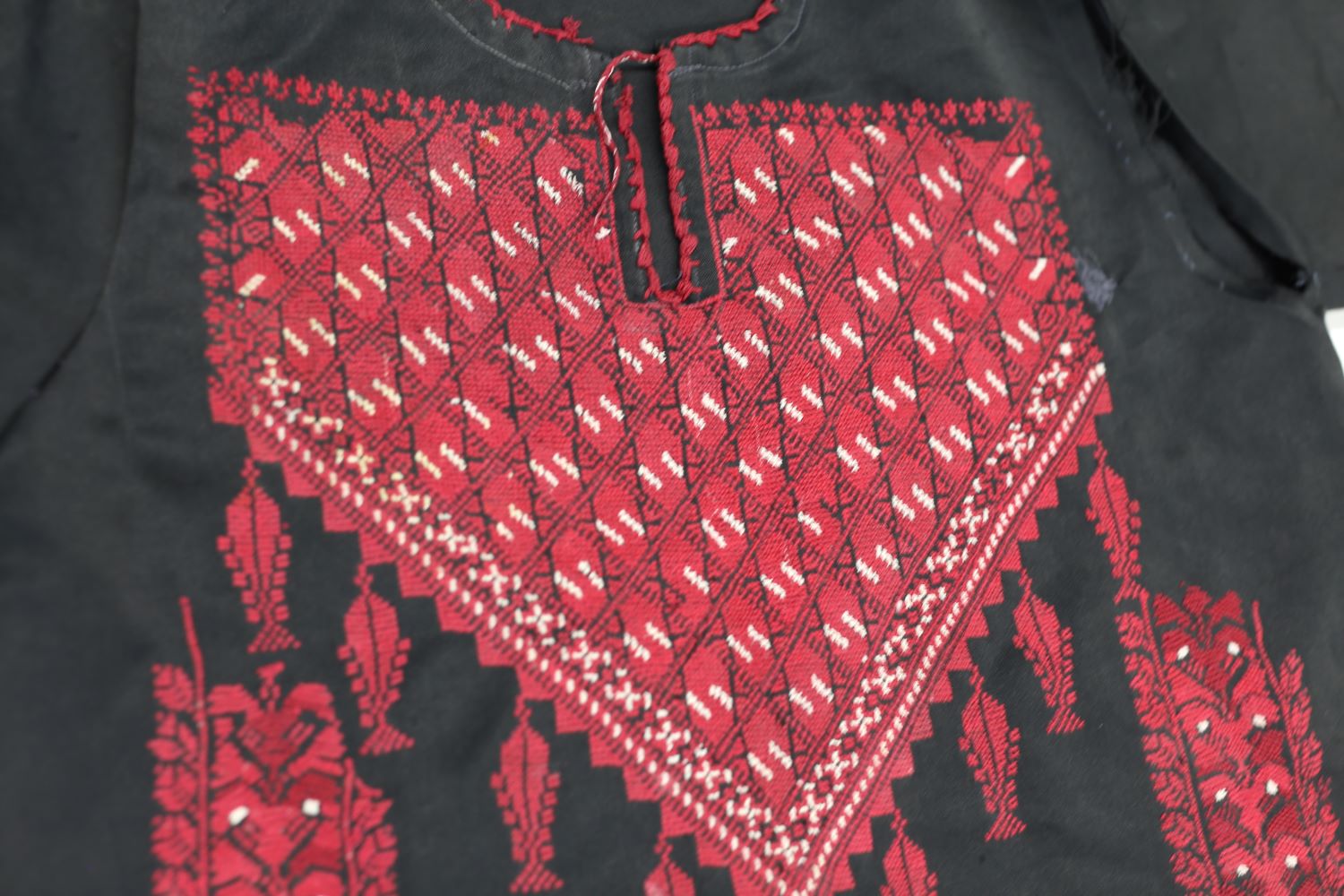
Detail of embroidered chest panel of woman’s dress
The young woman’s dress is embroidered in red and green, with star, rose, feather, cypress tree, Galilee and mountain motifs. Both sleeves have been torn from the dress and were not recovered, the fabric of the body is torn throughout.
The child’s dress is embroidered in red and green, with dense embroidery of Shaqhat slices and cypress motifs. The right sleeve has been shredded. The black linen fabric is severely bleached from sunlight, a result of being exposed on the roof for many months, with almost complete colour loss in areas. There are numerous tears and holes throughout the dress.
The torn sleeves and shredded fabric are a visceral reminder of the devastation of an ongoing war. These powerful objects have been fully documented, and the black dust covering them identified as explosive residue.
The child’s dress is currently on display in the exhibition Thread Memory at V&A Dundee. Discussions about how to conserve the dresses are ongoing, with the conversation being led by Palestinian curators, conservators, and community members. An instinctive response might be that the dresses should be left untouched. They are a powerful witness to the Genocide, and valuable survivors of Gazan heritage. They tell a story of resilience and fortitude, and are a reminder of the vibrant Palestinian culture that created and cherishes them. Conservation however is also an act of care. What would it mean to restore these dresses, to lovingly stitch them back together, to allow them to heal?
Conclusion
Palestinian cultural heritage in Gaza and the occupied West Bank is at urgent risk of destruction. It is important to listen to, and amplify, the voices of Palestinian conservators, curators, and heritage workers. We are grateful to Icon for the opportunity to bring attention to the work of the Palestinian Museum and its staff, who are working hard to preserve, protect, and promote Palestinian history, art and culture. If you want to meaningfully contribute to the ongoing work of the Palestinian Museum, there is a donations page on their website.
‘Thread Memory’ is on display at V&A Dundee until Spring 2026. ‘Gaza Remains The Story’ is on display at the Ulster Museum in Belfast.
Biographies
Katy Smith ACR
Katy Smith ACR is Senior Organics Conservator at the British Museum. Previous roles have included The Bowes Museum where she ran a programme of ICON internships; and the V&A, where she led the training programme with the Palestinian Museum. She is treasurer for the Dress and Textile Specialists network and the textile expert for the Church of England’s sculpture & furnishings conservation committee.
Baha Jubeh
Baha Jubeh is Conservation and Collections Manager at the Palestinian Museum, Birzeit; and Curator of the Palestine Heritage Museum at Dar Al-Tifel Association, Jerusalem. Previous roles have included Director of the Registry and Archive Unit at Riwaq Centre for Architectural Conservation; Coordinator for Collections at Birzeit University Museum; and Director of Collections and Preservation at the Yasser Arafat Museum, Ramallah.

